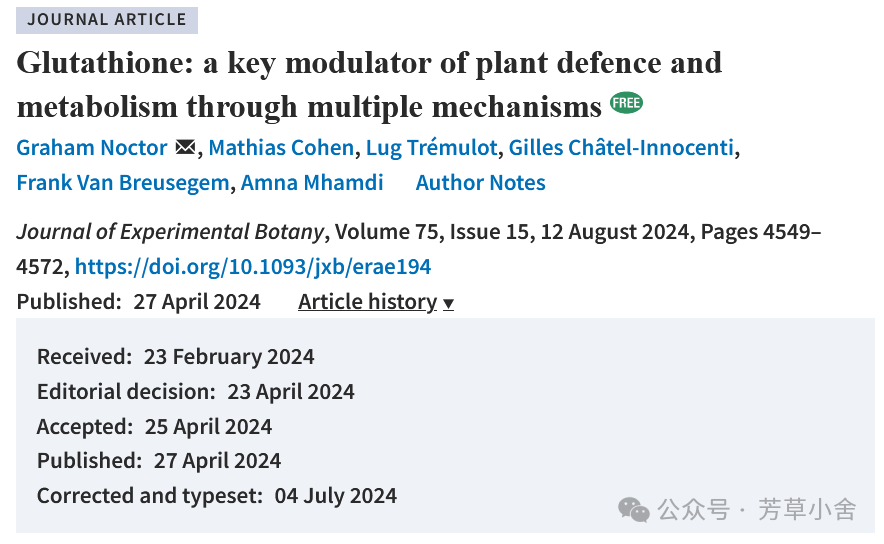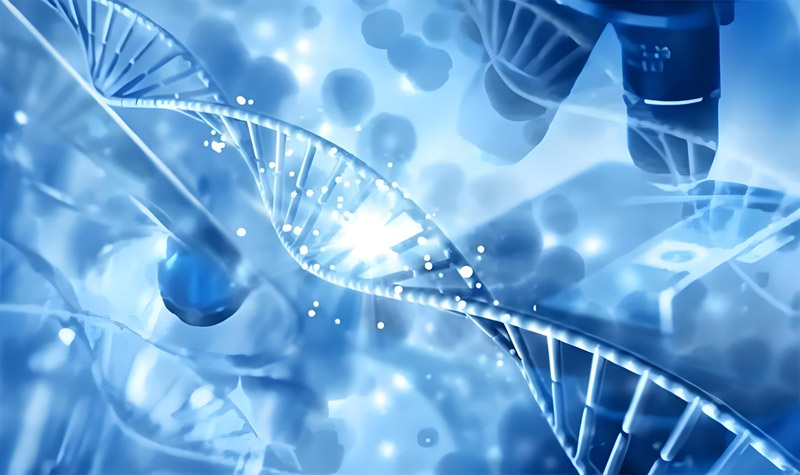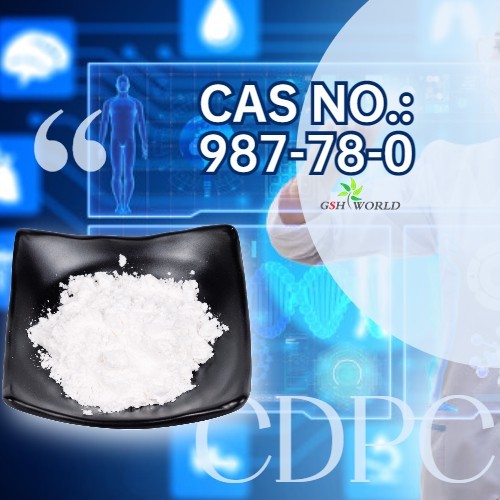On August 12, 2024, French scholars Graham Noctor et al. published an article titled Glutathione in the international Journal Journal of Experimental Botany. a review of a key modulator of plant defense and metabolism through multiple mechanisms summarizes the molecular mechanisms by which Glutathione regulates plant defense and metabolism through multiple mechanisms.
Abstract
REDOX reactions are the basis for energy conversion in living cells and also determine and regulate the responses of organisms to environmental stress.
During this process, the tripeptide molecule glutathione plays multiple roles:
As an important antioxidant, it endows cells with REDOX stability and serves as a bridge between signaling pathways and metabolic reactions that promote growth and development.
It is also involved in the assembly of cellular components, the biosynthesis of sulfur-containing metabolites, the inactivation of potentially harmful compounds, and the regulation of hormone signal intensity.
This multi-functional characteristic may explain why the state of glutathione can affect plants' responses to various environmental conditions.
It is particularly worth noting that there is a large amount of existing evidence indicating that glutathione plays a key role in determining the outcome of biological stress responses.
This review systematically expounds the synthesis, transport, degradation and REDOX turnover processes of glutathione in plants, analyzes the expression patterns of genes related to these processes under pathogen infection and related conditions, and explores the diversity of mechanisms by which glutathione affects protein function and gene expression.
Overview of Glutathione Functions
Very few small molecules can possess such diverse cellular functions as glutathione (Figure 1).
Most of its functions are related to or mediated by the cysteine thiol group.
In addition to exerting antioxidant functions through various reactions, the thiol group of glutathione also participates in the detoxification process through the exogenous substance binding reaction mediated by glutathione S-transferase and metabolizes active aldehydes in the glyoxalase pathway.
The cysteine sulfur atom is also the coordinating atom of the glutathione derivative plant chelate peptide, which can form complexes with potential active metals.

Figure 1 Multiple functions of glutathione in plants.
The functions of glutathione are far more than just detoxification; they also include serving as a cofactor in the assembly process of iron-sulfur clusters and participating in the sulfate assimilation pathway.
Its cysteine residues can also serve as sulfur donors for the biosynthesis of secondary metabolites, such as brassinolin and glucosinolates.
The function of glutathione may not be limited to the cysteine group. For instance, certain glutamate receptors can respond to glutathione.
Glutathione is also a regulatory factor of plant nutrition.
As the main storage form of non-protein sulfur in some plants, glutathione content is closely related to sulfate assimilation, transport, and broader amino acid metabolism.
The latest research indicates that it can also regulate the absorption and transportation of other nutrients such as iron, zinc and phosphate.
Although the crucial role of glutathione in stress responses has been widely recognized, new discoveries in recent years have further confirmed and expanded the earlier research - that this molecule has a particularly important function in the process of plants responding to pathogenic organisms.
These pathogenic organisms include bacteria, fungi, viruses and nematodes, etc.
Glutathione simultaneously regulates the interaction between plants and beneficial microorganisms, especially with symbiotic nitrogen-fixing bacteria and mycorrhizal fungi.
Many key discoveries in this field were obtained through the analysis of genetically modified plant lines with glutathione content.
Although it has been clearly stated that its mechanism of action far exceeds its antioxidant function, the related molecular mechanisms still need to be further analyzed.
Given the continuously growing research interest in this field, this review will focus on the role of glutathione in regulating the interaction between plants and the biological environment.
Omics technology for glutathione content control
morphology and state of glutathione
There are various forms of glutathione in biological cells.
The classical tripeptide (γ -glutamyl-cysteinyl-glycine) can be partially or largely replaced by homologues in some plant species.
The most typical ones are isoglutathione (γ -glutamyl-cysteinyl -β -alanine) in leguminous plants or hydroxymethyl glutathione (γ -glutamyl-cysteinyl-serine) in gramineous plants.
The third variant, γ -glutamyl-cysteinyl-glutamic acid, was found in maize under cadmium stress.
In alfalfa research, it was found that a reduction in glutathione and homologous glutathione content would decrease the efficiency of tumor formation.
Experiments on protoplasts of the same species have shown that these two compounds have differential effects on cell development.
Given the necessity of glutathione for the development of Arabidopsis thaliana, these homologues are likely to exert similar functions through a shared cysteine group, but their specificity cannot be completely ruled out.
The key feature of all homologues lies in their cysteine sulfur atoms:
It can exist in GSH in the form of free thiol groups and also form disulfide bonds with other cysteine groups.
The formation of disulfide bonds between two glutathione molecules will produce oxidized GSSG.
Due to their relative stability, GSH and GSSG are the main forms of existence under most conditions.
In multiple compartments within cells, the role of glutathione reductase (GR) gives GSH an absolute advantage.
The GSH/GSSG ratio in unstressed plant leaf extracts is typically about 20, and this composite value represents the average level of slightly different ratios in different chambers.
Data obtained using REDOX sensitive green fluorescent protein (roGFPs) indicated that the ratios of intracellular sites such as cytosol, mitochondria and chloroplasts were much higher than this.
Compartments lacking significant GR activity (such as cystic lumen, vacuoles, endoplasmic reticulum and Golgi lumen) have relatively low GSH/GSSG ratios.
Glutathione found in plasmosomes is also rich in GSSG, so its reduction state is relatively low.
The overall GSH/GSSG ratio in dormant or quiescent tissues is usually lower than that in metabolically active organs such as leaves or roots.
Glutathione biosynthesis
The classical glutathione tripeptide is synthesized from glutamic acid (Glu), cysteine (Cys), and glycine (Gly) through two ATP-dependent reaction steps, which are catalyzed by enzymes encoded by the GSH1 and GSH2 genes respectively (Figure 2).
It is generally believed that the substrate specificity of glutathione synthase (GSH2) determines the properties of the tripeptide product, which has been confirmed in the synthesis process of GSH and homologous GSH in alfalfa.
There is relatively little information about the synthetic mechanism of hydroxymethyl GSH - it may be catalyzed by the GSH2 enzyme, which has a high affinity for serine, or produced through GSH modification.
In any case, the current understanding of the classical glutathione (γ -glutamyl-cysteinyl-glycine) synthesis pathway is more in-depth, which is mainly attributed to the research achievements in Arabidopsis thaliana.

Figure 2. Compartmentalized distribution of glutathione synthesis and transport.
The accumulation of glutathione is mainly limited by the availability of cysteine and the competitive feedback inhibition of GSH on GSH1.
This synthetic pathway can also be activated at the transcriptional level by various stresses and stress-related factors, including jasmonic acid (JA) and pathogen infection.
Although oxidative stress can induce glutathione accumulation, this effect does not seem to rely mainly on the transcriptional upregulation of GSH1 and GSH2. The key driving factors lie in the enhanced synthesis of cysteine and the oxidative activation of GSH1 at the post-translational level.
The restrictive effect of GSH1 was confirmed by the overexpression experiment of this enzyme: overexpression can continuously increase the content of glutathione several times.
Although the original intention of cultivating glutathione-enriched plants was to enhance multiple stress resistance, no clear conclusion has been reached on this issue yet.
Some studies have reported enhanced stress resistance due to a higher demand for glutathione as a binding substrate or precursor, while others have found that overexpression can lead to significant stress symptoms (such as lesions), even under optimal growth conditions.
The latter may reflect the biological stress defense response activated by the increase in glutathione or its direct precursor γ -glutamylcysteine (γ-EC) content.
Table 1 summarizes the characteristics of GSH1 gene knockdown mutants.
Allele mutations lead to varying degrees of reduction in glutathione content:
The most severe deletion occurred in the rml1 mutant (which was identified due to root development defects);
Most other mutants have almost unrestricted growth and development under standard conditions, but significant growth inhibition was observed in the zir1 mutant (with the second most severe damage to glutathione content).
These findings suggest that 20-30% glutathione levels are sufficient to support basic vegetative growth under standard laboratory conditions, but higher levels are necessary for environment-related signal transduction and defense processes.

Table 1 summarizes the characteristics of knockdown mutants of the glutathione 1 gene.
Glutathione catabolism
Biochemical research since the 1980s has identified a variety of plant enzymes that can degrade glutathione by acting on the N-terminal γ -glutamyl residue or cleaving the C-terminal glycine.
Through the study of Arabidopsis thaliana mutants, the functions of these specific subtypes of enzymes have been further revealed.
Plasmosomes and vacuoles are important sites for the turnover of GSSG and glutathione conjugates, while GSH may mainly be degraded in the cytoplasm.
Some metabolic pathways are summarized in Figure 3.

Figure 3. Degradation pathways of glutathione.
This schematic diagram summarizes some of the enzymes involved in different subcellular compartments and juxtaposes the glutathione biosynthesis pathways for comparison.
CP: Carboxypeptidase γ-EC: γ -glutamyl cysteine; GGC: γ -glutamyl cyclotransferase GGP: γ -glutamyl peptidase GGT: γ -glutamyl transpeptidase 5-OP: 5-oxyproline OXP: Oxyproline enzyme PCS: Plant Chelating Peptide Synthase.
Some glutathione degrading enzymes may have functions that go beyond simply recovering constituent amino acids: for instance, they can synthesize sulfur-containing metabolites by using GSH sulfur groups.
A typical representative is γ -glutamyl peptidase (GGP), which is involved in the synthesis of glucosinolate and camalexin.
This enzyme in Arabidopsis thaliana is encoded by five genes. Studies have shown that two of its subtypes play an important role in regulating the glutathione content and sulfur status in leaves.
influence of glutathione content on plant-pathogen interactions
More than three decades of research have shown that excitons or pathogen infections can induce the accumulation of glutathione, often accompanied by an increase in the proportion of its oxidized form.
The evidence of functional importance comes from the observation that an increase in glutathione content in plant tissues affects the response to biological stress:
Transgenic enrichment of glutathione can cause the formation of lesions and pathogen-associated (PR) gene expression in tobacco leaves, while pharmacological increase in glutathione content enhances the resistance of cucumber leaves to viral infection.
Subsequent studies on Arabidopsis thaliana have confirmed that glutathione concentration is a key driving factor in determining the response outcome to biological stress.
Reduced glutathione content or weakened chloroplast transport capacity can lead to impaired resistance to pathogenic bacteria. This resistance effect is accompanied by changes at proteomic and metabolomic levels, including a decline in the ability to trigger defensive plant hormone signaling.
Given the close connection between glutathione content and the response to biological stress, it is of great value to explore the responses of genes related to glutathione synthesis, degradation and transport to pathogens or PR signaling pathways.
We obtained expression data from 11 transcriptome experiments on Arabidopsis thaliana plants exposed to pathogens or defense hormones.
In addition to the genes related to glutathione metabolism, the marker genes of salicylic acid (SA) and jasmonic acid (JA) signaling pathways were also included for comparison (Figure 4).
Analysis shows that under different conditions, JA marker genes are closely clustered. Consistent with current understanding, necrotrophic fungi and insect infections can induce the expression of JA marker genes.
Neither semi-live trophic bacteria nor SA treatment induced JA marker genes, and under certain conditions even inhibited JA signal transduction (Figure 4).
Except for JA treatment, most conditions significantly induced the expression of four SA marker genes (including those related to synthesis and downstream signal transduction) (see Figure S1).
The clustering positions of EDS5, which encodes the transporter protein, slightly deviate from those of the other three SA marker genes (Figure 4).
This indicates that some conditions simultaneously activate two plant hormone signaling pathways, while others only induce the SA pathway (see Figure S1).

Figure 4. Glutathione synthesis, Transport and catabolism: Gene expression under biological stress.
For comparison, the analysis included two genes encoding glutathione reductase (GR), as well as the marker genes of the salicylic acid (ICS1, EDS5, PBS3, PR1; purple marked) and jasmine acid (OPR3, 4CLL5, VSP1, PDF1.2a; blue marked) pathways.
Genes related to glutathione biosynthesis and GSSG reduction are shown in bold.
The datasets of wild-type Arabidopsis thaliana exposed to pathogens or defense hormones were screened through the Genevestigator platform. Ultimately, 11 datasets were retained from over 20 datasets (screening criteria: comparable developmental stages, clear experimental conditions, and at least 3 biological replicates).
The heat map shows the expression of 51 genes under 11 conditions, including:
Salicylic acid, jasmonic acid, fungi (A. brassicicola, P. cucumerina, G. orontii, S. sclerotium), Oomycetes (GST-NPP1, P. infestans), bacteria (P. syringae pv. maculicola, P. syringae pv, tomato DC3000, viruses (TuMV), and insects (L. huidobrensis).
Bidirectional hierarchical clustering is carried out using the Pearson correlation function in the Genevestigator tool. CLT2 (At4g24460) has no available data.

Figure S1. expression patterns of salicylic acid and jasmonic acid marker genes in response to biological stress.
The expression analysis of glutathione-related genes under these conditions revealed several important characteristics.
Genes involved in glutathione degradation exhibit expression specificity:
For instance, specific γ -glutamyl cyclitransferases (γ-GGCs) and γ -glutamyl peptidases (GGPs) show a dispersed distribution in cluster analysis.
The expression of multiple genes encoding the ABCC transporter was upregulated and clustered together with the GR1 gene encoding the activity of glutathione reductase (GR) in the cytoplasmic isocompartment (Figure 4).
This co-expression pattern may be used to limit the accumulation of GSSG in the cytoplasm, although the ABCC transporter family may also play an important role in vacuole isolation of glutathione conjuges during the response to biological stress.
Antioxidant function and REDOX homeostasis
Glutathione-dependent antioxidant function
The nucleophilic thiol group of GSH makes it a reducing agent.
By providing electrons to various oxidants, GSH can be converted into the stable form GSSG, which in turn can be restored to GSH through the action of reductase.
Like many other small molecule antioxidants, GSH can effectively block the chain reaction of oxidation.
Although GSH can be regarded as a low-molecular-weight antioxidant capable of undergoing chemical reactions with reactive oxygen species (ROS) such as superoxides, it is also a cofactor for a variety of antioxidant enzymes.
Its chemical reaction rate with H₂O₂ is relatively slow, but it can be significantly accelerated by various peroxidase systems (Figure 5).
Among them, the so-called "glutathione peroxidase (GPXs)" may have an improper naming:
Multiple independent studies have confirmed that these enzymes preferentially utilize thioredoxin (TRX) in plants.
Many GSTs, which are renowned for catalyzing glutathione binding reactions, also possess peroxidase activity and are significantly upregulated under oxidative stress.
However, in most cases, the significance of GSTs as a universal antioxidant peroxidase remains unclear.

Figure 5. The main enzyme-dependent pathways of glutathione REDOX turnover.
Note that the reduction of dehydroascorbic acid (DHA) may also occur spontaneously at a considerable rate.
The color of GPX is lighter than that of other GSH-dependent enzymes, indicating that this type of enzyme prioritizes the use of thioredoxin over GSH.
ASC: Ascorbic acid APX: Ascorbic acid Peroxidase DHA(R) : Dehydroascorbic acid (reductase) GR: Glutathione reductase GSH: Reduced Glutathione GRX: Gludoxin GSNO: S-Nitroso glutathione GSSG: Oxidized Glutathione; GST: Glutathione S-transferase MDHA(R) : Monodehydroascorbic acid (reductase) PRX: Peroxidin ROOH: H₂O₂ or organic peroxides; ROH: Water or organic alcohol.
Glutathione oxidation is involved in reactive oxygen species metabolism through a variety of indirect mechanisms, which typically involve two or more tandem enzyme reactions.
The first one is the GSH-dependent peroxidase reaction pathway through the coupling of specific types of peroxidins with specific gludoxin (GRXs).
Secondly, it also relies on GRXs, that is, it reduces methionine sulfoxide through methionine sulfoxide reductase.
The most thoroughly studied indirect approach is the pathway by which GSH reduces dehydroascorbic acid (DHA) to support ascorbic acid regeneration (upper right of Figure 5).
Glutathione reductase
The function of glutathione reductase (GR) is to maintain a highly reduced glutathione library and avoid such stress in compartments where disulfide bond stress may interfere with protein function.
The GR isoenzyme of bacterial origin is one of the earliest enzymes to be overexpressed in plants as part of the research on endowing multiple stress resistance by strengthening antioxidant defense.
Although overexpression of GR in poplar cytoplasm has little effect, overexpression in chloroplasts does have a certain impact on glutathione libraries and resistance to oxidative stress.
However, no significant effect was observed in field-cultivated cotton expressing Arabidopsis thaliana GR.
For more than three decades, extensive research has been conducted on enhancing stress resistance through overexpression of antioxidants.
The overall effect of glutathione-related metabolic overexpression is similar to that of other antioxidant systems - with limited or no improvement in general stress resistance.
This is in line with the increasingly recognized view in this century that reactive oxygen species are not only harmful molecules but also signaling molecules necessary for normal development and environmental response.
Glutathione REDOX turnover and plant-pathogen interaction
Pathogens or their related molecules can usually induce the oxidation of glutathione (at least instantaneously).
What pathways lead to this effect?
Although the chemical reaction rate of glutathione with reactive oxygen species such as superoxides is relatively fast, its reaction with H₂O₂ is relatively slow. Peroxidase, which can directly or indirectly oxidize GSH, can significantly accelerate this process.
Although so-called GPXs may have important functions under stress, their contribution to glutathione oxidation may be limited (see previous text).
Observations of Arabidopsis thaliana catalase mutants have shown that dehydroascorbic acid reductase (DHARs) is the main participant - these mutants accumulate GSSG and activate the PR response.
The glutathione changes observed in the cat2 mutant were largely absent in the cat2 dhar1 dhar2 dhar3 quadruplet mutant, which lacked the functions of three DHAR genes.
However, under strong light conditions, the effects of the three mutants dhar1, dhar2 and dhar3 are not obvious.
However, since no significant accumulation of GSSG was observed even in wild-type plants under these conditions, it is difficult to draw a definite conclusion from this study.
Overall, these findings are in line with the model that "DHA is the main oxidant linking glutathione and H₂O₂ clearance "(Figure 3), meaning that the accumulation of GSSG mainly depends on DHARs.
But there are still problems to be solved:
There is a lack of clear evidence of DHA reducing activity in the cytoplasmic subtype DHAR2 of Arabidopsis thaliana.
Model studies have shown that the chemical reaction rate between GSH and DHA is fast enough, and theoretically, DHAR does not need to be involved.
It is then difficult to explain why the loss of DHAR function has such a strong impact on H₂O₂ -induced glutathione oxidation - because the chemical reaction should have been sufficient to link glutathione to the ascorbic acid REDOX system.
mechanism connection between glutathione, protein function and gene expression
Recent studies have found that glutathione can affect protein function (and in some cases, gene expression) through multiple pathways and mechanisms, many of which involve the regulation of plant hormone signal transduction.
In addition to the SA and JA pathways, glutathione status can also affect the processes related to auxin, ethylene, strigolactone and abscisic acid.
At the mechanism level, glutathione-related signaling responses mainly include the modification of the cysteine group in proteins, but other glutathione-dependent responses can also affect cellular function (Figure 7).

Figure 7. Possible mechanisms of glutathione-dependent signal transduction.
Left: Signal transduction through post-translational modification (PTM) of protein cysteine groups;
On the right: metabolite-dependent signal transduction.
The text marks the target or downstream effect examples of each type of signal transduction.
The transformation process from GSNO to GSSG has been simplified and presented.
GLR: Glutamate receptor-like protein; GRX: Gludoxin GSNO(R) : S-nitroso glutathione (reductase); GST: Glutathione S-transferase NO: Nitric oxide ROS: Reactive oxygen species.
Glutathione and oxidative lipid signaling
Multiple studies have pointed out that glutathione is associated with the signaling of oxidized lipids such as jasmonic acid (JA) and 12-oxo-phytodienoic acid (OPDA).
JA and/or mechanical injury can induce the expression of glutathione synthesis-related genes and GSNOR.
As mentioned earlier, the mutation site of the JA hypersensitive mutant jah2 is located in the enzyme gene of the second step of glutathione synthesis.
The characteristic changes in glutathione status may affect the SA-JA signaling cross-dialogue, a process involving components such as NPR1 and GRX480 (also known as ROXY19).
However, the specific functions of glutathione in these interactions remain to be clarified.
Oxidative stress, while driving the oxidation of glutathione, also promotes the accumulation of various JA derivatives. Transcriptome analysis of gr1 or glutathione-deficient mutants indicates that glutathione status is an important factor controlling the expression of JA-related genes.
In addition to the effect of glutathione on oxidized lipid signaling, OPDA and other active electrophiles may also affect cell function by depleting the intracellular GSH pool.
This phenomenon can be observed in plants exposed to certain herbicides and heavy metals and other exogenous substances.
In addition to catalyzing the JA synthesis step, OPR3 may also protect cellular sulfhydryl groups by controlling the accumulation of OPDA and other active electrophiles.
Interestingly, OPR3 has also been reported to have mono-dehydroascorbic acid reductase (MDHAR) activity.
The significance of this reaction compared to the classical MDHARs remains unclear, but it may limit GSH oxidation by reducing DHA formation through a synergistic effect with OPDA clearance.
The relationship between glutathione and oxidized lipids may be very complex, and the specific mechanism remains to be clarified.
However, one aspect of such a relationship can be briefly interpreted:
The activation of oxidative lipid biosynthesis drives the upregulation of cysteine and glutathione synthesis to supplement those GSH used in binding reactions - these binding reactions are designed to control or antagonize oxidative lipid-driven signal transduction and transcriptional reprogramming.
The original link: https://doi.org/10.1093/jxb/erae194






